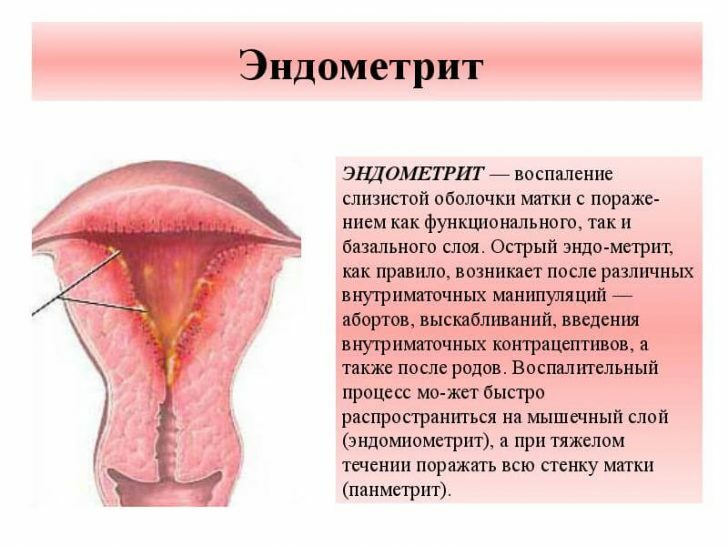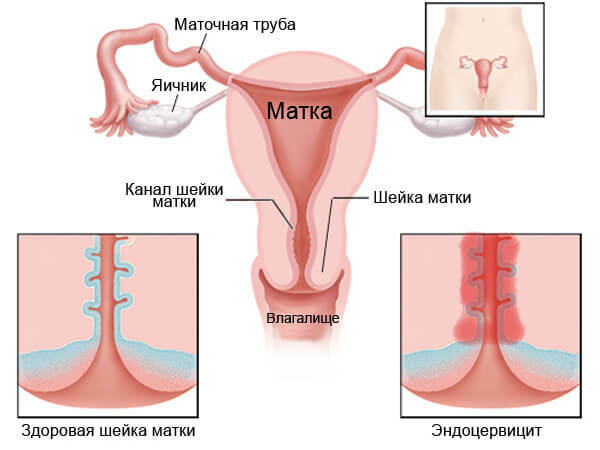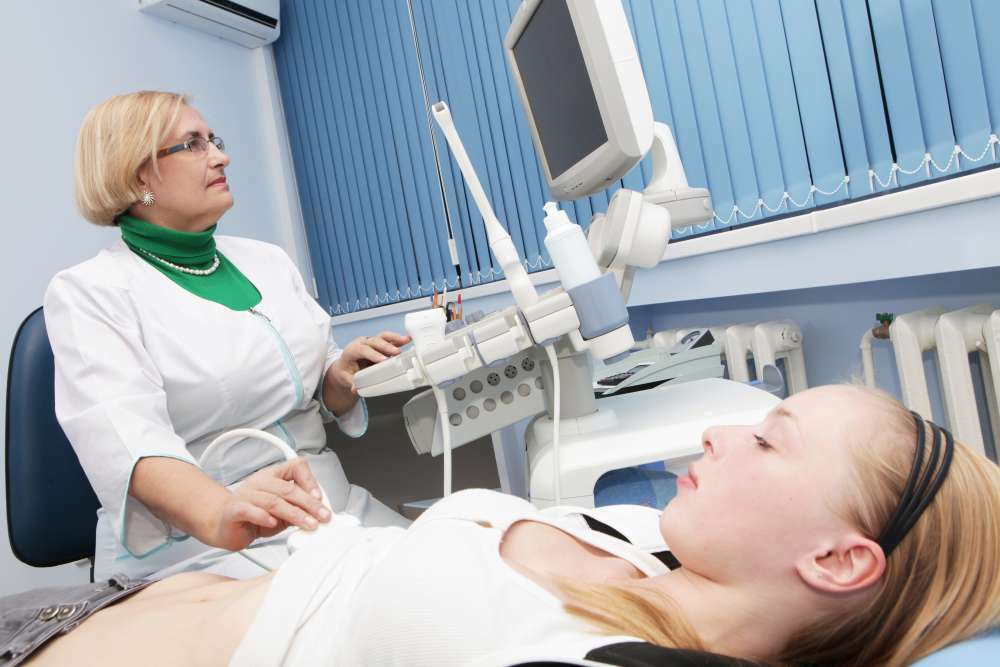How to Calculate Ovulation
Ovulation includes a number of processes that occur in a woman's body in a certain sequence : To be more precise, ovulation is exactly the moment when an already matured and ready to fertilize egg leaves the follicle.The life cycle of an egg when it is ready for fertilization is 24 hours.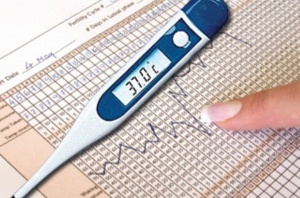 Female physiology is designed in such a way that the ability to become pregnant is only 1-2 days per month.This most favorable period for conception in every woman is called ovulation.In this process, all internal sexual organs participate, therefore, for various pathological disorders and malfunctions of the menstrual cycle, ovulation may be absent. The concept of ovulation The symptoms of ovulation How to determine ovulation: the most effective ways of We recommend to read:
Female physiology is designed in such a way that the ability to become pregnant is only 1-2 days per month.This most favorable period for conception in every woman is called ovulation.In this process, all internal sexual organs participate, therefore, for various pathological disorders and malfunctions of the menstrual cycle, ovulation may be absent. The concept of ovulation The symptoms of ovulation How to determine ovulation: the most effective ways of We recommend to read: The concept of ovulation
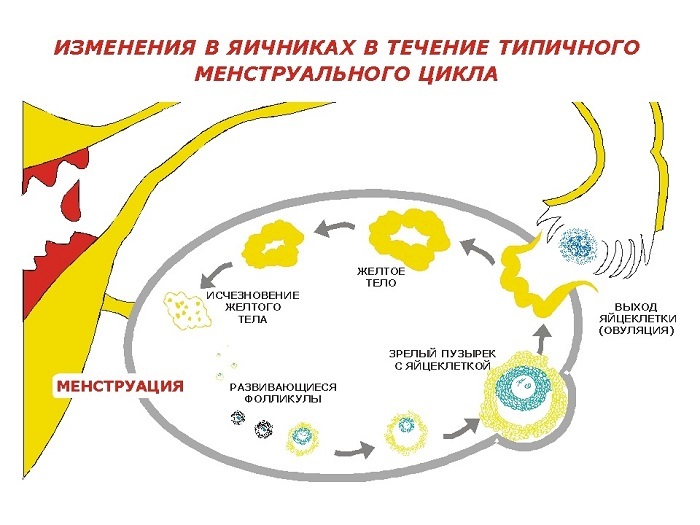 Ovulation occurs against a background of some hormonal changes in the body of a woman - 2 phases of the menstrual cycle :
Ovulation occurs against a background of some hormonal changes in the body of a woman - 2 phases of the menstrual cycle :
- follicular - maturation of the follicle;
- luteal - the time from ovulation until the next menstruation.
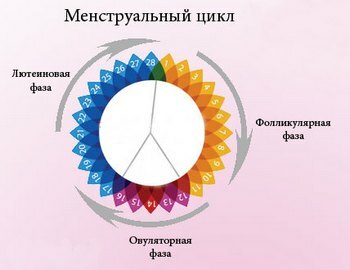 Before ovulation, namely 24 hours before it, the maximum level of luteinizing hormone( LH) in the body is observed.Its peak is provided by increasing the concentration of another female sex hormone, estradiol, up to a certain limit.The latter is produced by the follicle, which grows in the ovary.With an increase in the concentration of estradiol, the endometrium also grows.After the ovulation occurs and the follicle opens, a yellow body forms in its place.It is already beginning to release progesterone, which prepares the endometrium for a future pregnancy.At the peak of estradiol basal temperature( measured in the rectum) decreases, and when the secretion of progesterone begins, it rises.
Before ovulation, namely 24 hours before it, the maximum level of luteinizing hormone( LH) in the body is observed.Its peak is provided by increasing the concentration of another female sex hormone, estradiol, up to a certain limit.The latter is produced by the follicle, which grows in the ovary.With an increase in the concentration of estradiol, the endometrium also grows.After the ovulation occurs and the follicle opens, a yellow body forms in its place.It is already beginning to release progesterone, which prepares the endometrium for a future pregnancy.At the peak of estradiol basal temperature( measured in the rectum) decreases, and when the secretion of progesterone begins, it rises.
The fertilization capacity of the egg is maintained only for 12-24 hours, and in spermatozoa from 2 to 4 days.Taking into account this fact, on the days of ovulation the probability of conception of is maximal and equal to 33%, in the following days after ovulation and 6 days before its onset, this probability is 0%, 3-4 days before - 15%, for 2 days -25%, for 1 day - 31%.
Symptoms of ovulation
Given that this process is hidden for the human eye, the signs of ovulation are subjective, that is, those that only the woman can observe and feel.Objective symptoms of ovulation are laboratory and instrumental techniques for its study. The subjective definition of ovulation is based on the following changes in the body that allow a woman to determine her own :
- Vaginal discharge.Within a few days, they become more than usual, and they have a lower viscosity, which is due to the effect of estrogens during this period.Allocations after ovulation sharply decrease in volume and take the form of thick mucus.
- Pain in ovulation.A woman can feel the one-stage sharp pain of a tingling character that appears in the lower abdomen on the right or on the left.This occurs during ovulation, when the follicle bursts.This characteristic is not characteristic of all women.
- Sexual attraction.It can intensify 1 or 2 days before ovulation.
- Bleeding.At the time of ovulation, a very small( several milliliters) bleeding is possible, which does not affect the process of conception in any way.
All these symptoms of ovulation are observed on day 11-16 of the cycle, depending on its length.Please note: how many days to last for ovulation, you can learn only through instrumental methods of diagnosis, but there are other methods, less reliable, but more affordable.
How to determine ovulation: the most effective ways of
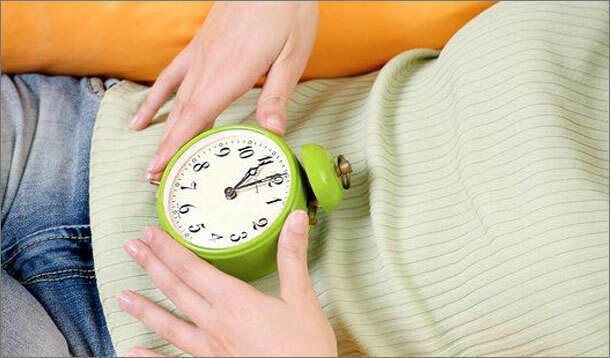 The need to calculate ovulation appears in a woman when she is planning a pregnancy or vice versa, trying to avoid it in order to calculate "safe" days.For today there are enough ways to determine this moment as accurately as possible.If this can not be done independently at home, then there is a sufficient number of laboratory and instrumental methods. In particular, today such diagnostic methods of ovulation are used:
The need to calculate ovulation appears in a woman when she is planning a pregnancy or vice versa, trying to avoid it in order to calculate "safe" days.For today there are enough ways to determine this moment as accurately as possible.If this can not be done independently at home, then there is a sufficient number of laboratory and instrumental methods. In particular, today such diagnostic methods of ovulation are used:
- basal temperature;
- test for ovulation;
- laboratory tests;
- ovulation calculator
- Ultrasound monitoring of the ovaries, endometrium;
- ovulation calendar;Endoscopic biopsy.
- .
Basal temperature
It is measured exclusively in the morning after sleep.Without getting out of bed, you must insert the thermometer into the rectum for 5 minutes.The data are recorded daily and based on the basal temperature graph.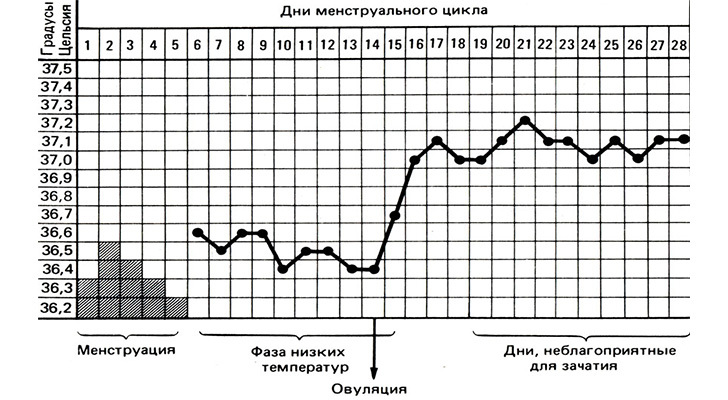 In days before ovulation a basal temperature decrease is observed, and immediately at the time of its onset a sharp increase in 0.5-0.6 graduation of the thermometer.
In days before ovulation a basal temperature decrease is observed, and immediately at the time of its onset a sharp increase in 0.5-0.6 graduation of the thermometer.
Ovulation test
It is designed for home use.To determine exactly the day of ovulation, the test will have to be repeated more than once.It has the form of a test strip, which can be purchased at each pharmacy.Such a test reacts to a rise in luteinizing hormone in the urine.The peak of its concentration during the normal menstrual cycle is observed 24 hours before the onset of ovulation.Perform this test should be 2 times a day, daily, starting a few days before the expected date.2 strips on the test for ovulation suggest that at the moment the body of a woman is maximally ready for conception.One line indicates that the test is workable, and the second reflects the level of luteinizing hormone. Note: if the second bar on the ovulation test is paler than the control( repeated during each cycle), this may be a symptom of the absence of ovulation due to pathology in the body( often hormonal). It should be borne in mind that in the norm of 1-3 cycles per year can be anovulatory, and the older the woman, the more they become and this is not a pathology.If ovulation does not occur regularly, then it requires already medical intervention, a full examination and treatment.
Note: if the second bar on the ovulation test is paler than the control( repeated during each cycle), this may be a symptom of the absence of ovulation due to pathology in the body( often hormonal). It should be borne in mind that in the norm of 1-3 cycles per year can be anovulatory, and the older the woman, the more they become and this is not a pathology.If ovulation does not occur regularly, then it requires already medical intervention, a full examination and treatment.
Ovulation test is not suitable for women who have the following conditions :
- irregular cycle;
- of the endocrine system;
- chronic stress, against which the level of LH is often elevated, which can give a false positive test;
- polycystic ovary syndrome.
Laboratory tests
Gynecologists in their work use some functional tests to calculate the day of ovulation.They are inexpensive and affordable, but require a woman to visit a gynecologist for several days in a row, which can be problematic. These tests are based on the study of the characteristics of the discharge from of the vagina .
- Symptom of fern.The doctor takes the mucus from the cervix and applies it to the slide.Because of the significant increase in potassium and sodium salts in it before ovulation after the drying of the smear, the mucus crystallizes, forming a picture in the form of a fern leaf.
- The stretch of cervical mucus.A couple of days before ovulation, the discharge is white and stretched about 1 cm approximately, on the day of ovulation they take the form of egg white and stretch for several centimeters.After ovulation they become sticky, dense and very few.
- Symptom "pupil".During the examination, the doctor marks the slightly open channel of the cervix.
The reliability of such tests does not exceed 50% in reality.
Ovulation Calculator
Today there is a special program that helps determine the least and most favorable days for conception - the ovulation calculator.With its help, you can calculate ovulation for each woman individually, provided that she has a physiologically normal menstrual cycle( 28 days).In order to use the calculator, you must enter 2 numbers: the date of the last menstruation( its first day) and the duration of the cycle itself.The program will produce ready-made results.The reliability of this method of determining ovulation is relative.
Ovary ultrasound
This method is considered the most informative and allows you to obtain the following information :
- state of the endometrium;
- growth of the dominant follicle;
- detection of the yellow body, which is formed on the site of the former follicle, and parallel changes in the structure of the endometrium.
The ultrasound monitoring allows the doctor to accurately record the moment when the follicle is enlarged and broken, that is, directly the moment of ovulation.In this case, the gynecologist always advises simultaneously to keep a graph of basal temperature and take functional tests.For a cycle 2-fold ultrasound is sufficient to determine on what day ovulation occurs.
The first ultrasound is timed as close to the expected day of ovulation, where the presence and size of the dominant follicle is determined.The second study is based on the approximate day of ovulation based on the rate of growth of the follicle.On average, it grows by 2 mm per day and reaches a maximum of 20-24 mm.In parallel, laboratory tests for the level of progesterone and estradiol are prescribed.Ultrasound is also often used as a diagnosis after stimulation of ovulation to determine its exact date of onset.
Ovulation Calendar
This is the individual chart for each woman's menstrual cycle.It marks the start date, end of the monthly and ovulation .Also in this calendar record the sexual acts that have occurred.The compilation of such a calendar will be useful, not only for those who want to conceive a child, but also for those who do not yet have motherhood( calculate "safe days").This calendar is similar to the ovulation calculator, but it is compiled manually.With his help, a woman can independently learn for several cycles to determine the moment of ovulation, taking into account the characteristics of her body.It is necessary to fix the data in the calendar for at least 6 months before calculating ovulation.
Note: The individual fertile period is calculated thus: from the longest cycle, 11 are taken away, and from the short one - 18. For example, 28-11 = 17 is the last day of a woman's fertility( where 28 is the longest cycle)18 = 8 is the first day of fertility, where 26 is the shortest cycle.As a result, from the 8th to the 17th day of the cycle, this is the most favorable period for conception, since it is in this interval that ovulation occurs.In most women, the regular cycle is 28 days, when ovulation occurs on day 14-15. Example of an ovulation calendar with a cycle time of 32 days: 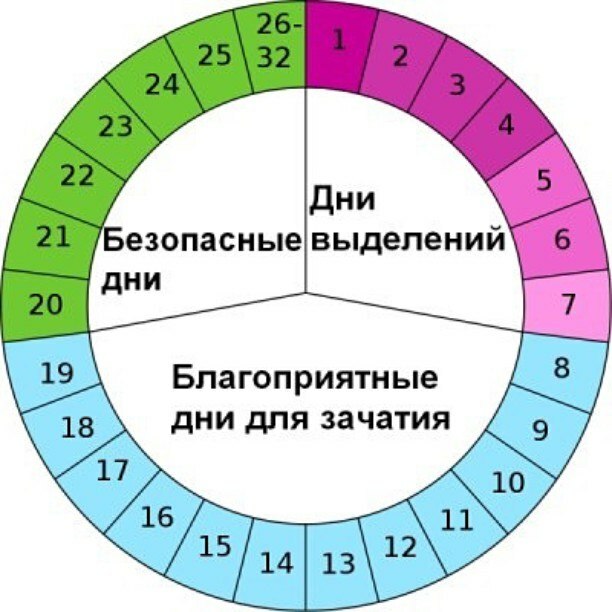
Endometrial biopsy
This is an instrumental method for diagnosing ovulation.It is rarely resorted to unless only other technologies are of little information.During ovulation, namely in the middle of the luteal phase, the endometrium is transformed, that is, its secretory transformation occurs, and its presence is a sign of ripening of the follicle.
Ovulation and Conception
The menstrual cycle of a woman consists of 3 periods relative to the probability of conception: the relative sterility begins from the first day of the month and lasts until the ovulation( it can vary by the number of days);
-
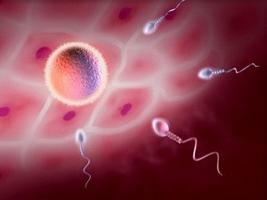 ;
; - Fertility - directly the moment of ovulation, when the highest possible chances of conceiving a child, it lasts 12-48 hours;
- absolute sterility - during this period it is almost impossible to get pregnant, and it ends with the first day of the next menstrual cycle.
Fertilization, released from the follicle, is possible only during ovulation. For this, the woman's body is specially prepared:
- increased secretion of cervical mucus to facilitate the advancement of spermatozoa;
- open channel of the cervix;
- increases sexual attraction;
- blood supply of erogenous zones and genitals is amplified.
Pregnancy after ovulation occurs after 6-12 days, depending on when the fertilized egg is dropped into the uterus and implanted into its wall.For more information on how to determine the time for conception, see this video review:
Viktorova Julia, gynecologist

